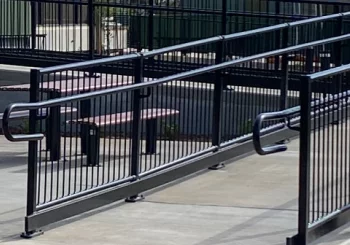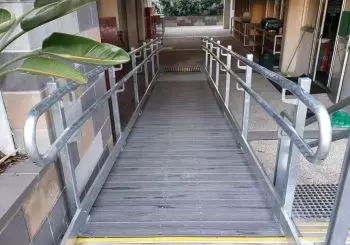Wheelchair and other accessibility ramps can react differently to weather elements depending on the materials that they’re made of. During the cold and the winter season, the accumulation of ice, snow, and rainwater can affect the overall quality of a ramp. Aside from making it slippery, it can also damage the ramp’s structure, which can lead to accidents.
To preserve the structural integrity of your wheelchair ramp during the winter season, it is important to practice proper maintenance tips that are appropriate for its construction. In this guide, we’ll teach you how to prepare your concrete, wood, and aluminium ramps for the effects of winter.
Concrete Ramps
Snow and ice can be easily cleared away from concrete ramps using a shovel. Laying down a layer of salt or ice melt on the surface of your ramp is also a great way to prevent the accumulation and formation of ice and snow. If your concrete ramp has non-slip features, keep these areas clear to ensure that the ramp can still be safely used during winter.
Unlike other materials, concrete can react differently to the cold. The drop in temperature can cause this material to expand and condense, which can lead to the formation of cracks on the surface of your ramp. This is why it’s important to regularly inspect your concrete ramp for cracks and other structural damages so you can address these issues as soon as possible.
Wood Ramps
Similar to concrete, wood can also be significantly affected by changes in temperature and weather elements. Exposure to water can cause moisture to seep into the wood and accelerate its deterioration. One of the most practical ways to prevent this from happening is applying a sealant to the wooden panels of a ramp to protect them from the elements and prolong their lifespan.
Also, if the surface of your ramp has grip tape for added traction, it’s highly recommended to regularly replace this feature. Over time, the adhesive properties of grip tape can lessen, causing it to peel off from your ramp’s surface. Instead of serving as a safety feature, it could become a tripping hazard.
Aluminium Ramps
Compared to concrete and wood ramps, accessibility ramps made from aluminium are the easiest to maintain. When it comes to clearing the ramp of snow and ice, make sure to use a thick-bristled broom or plastic shovel, as metal ones might scratch and dent its surface.
In addition, avoid using chemical-based ice melt or salt on the ramp as these could affect the quality of the aluminium. Instead, you can try using a Magnesium Chloride salt substitute to keep ice off the ramp.
If you’re looking for an accessibility ramp for your home or business, then make sure to get in touch with Adapta Ramps. Our modular wheelchair ramps, which can be built from different materials, are DDA compliant and are designed to endure Australia’s harsh weather conditions



